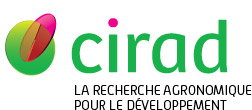Yassegoungbe Fifame Panine, Vihowanou Gaius Segbegnon, Onanyemi Tawakalitu, Assouma Mohamed Habibou, Schlecht Eva, Dossa Luc Hippolyte. 2024. Enteric methane production, yield, and intensity in smallholder dairy farming systems in peri-urban areas of coastal swst african countries: Case study of Benin. Journal of Sustainable Agriculture and Environment, 3 (4), 11 p.
|
Version publiée
- Anglais
Sous licence  . .
612987.pdf Télécharger (618kB) | Prévisualisation |
Résumé : Enteric methane (eCH4) is a major environmental pollutant emitted by ruminants. To target mitigation measures, it is necessary to accurately estimate GHG emissions from livestock farming. Until now, milk‐producing farms in the peri‐urban areas of South Benin are pasture‐based systems, and have been largely neglected by international research. Therefore, this study estimates eCH4 emissions from pasture‐based peri‐urban dairy farms across four different animal categories during dry and wet seasons. Six herds were selected for field measurements; one representative animal was selected per category from each herd and its body weight estimated. Subsequently, the selected animals were closely monitored on pasture for three consecutive days. Direct observation of their behavior and the hand plucking method were used to mimic the animals' selective foraging and to sample parts of the different plant species consumed in proportion to their, to determine the quality of their daily diet. The nutrient content and digestibility of the collected feed samples were assessed using near‐infrared spectroscopy. Additionally, 30 herds were monitored bi‐monthly during a 12‐month period to collect all input and output data, including milk yields. Annual enteric methane (eCH4) emissions per animal category were estimated using the IPCC Tier 2 method. Subsequently, the eCH4 intensities of lactating cows were calculated per kg of fat‐protein corrected milk (FPCM). All statistical analyses were performed using R software. Overall, the average annual eCH4 production was 40.6 kg/head/year and the eCH4 yield was 20.3 g/kg of dry matter intake, with significant differences between seasons and no differences between animal categories. Regardless of season, older animals yielded higher eCH4 outputs. The average eCH4 production per kg of live weight was 0.48 g for both seasons. The overall eCH4 intensity (g CH4/kg FPCM) recorded during the wet season (74.3) was higher than that recorded during the dry season (70.5).
Mots-clés Agrovoc : alimentation des animaux, production laitière, méthane entérique, bovin laitier, ferme laitière, spectroscopie infrarouge, rendement laitier, méthane, composition chimique, gaz à effet de serre, changement climatique
Mots-clés géographiques Agrovoc : Bénin, Burkina Faso
Mots-clés libres : Dairy cattle, Greenhouse Gases, IPCC Tier 2 method, Pasture-based milk production, Urban and peri‐urban livestock
Agences de financement hors UE : The Regional Universities Forum for Capacity Building in Agriculture
Auteurs et affiliations
- Yassegoungbe Fifame Panine, UAC (BEN)
- Vihowanou Gaius Segbegnon, UAC (BEN)
- Onanyemi Tawakalitu, UAC (BEN)
-
Assouma Mohamed Habibou, CIRAD-ES-UMR SELMET (SEN)
 ORCID: 0000-0002-8163-0340
ORCID: 0000-0002-8163-0340
- Schlecht Eva, Universität Kassel (DEU)
- Dossa Luc Hippolyte, UAC (BEN) - auteur correspondant
Source : Cirad-Agritrop (https://agritrop.cirad.fr/612987/)
[ Page générée et mise en cache le 2025-10-01 ]




